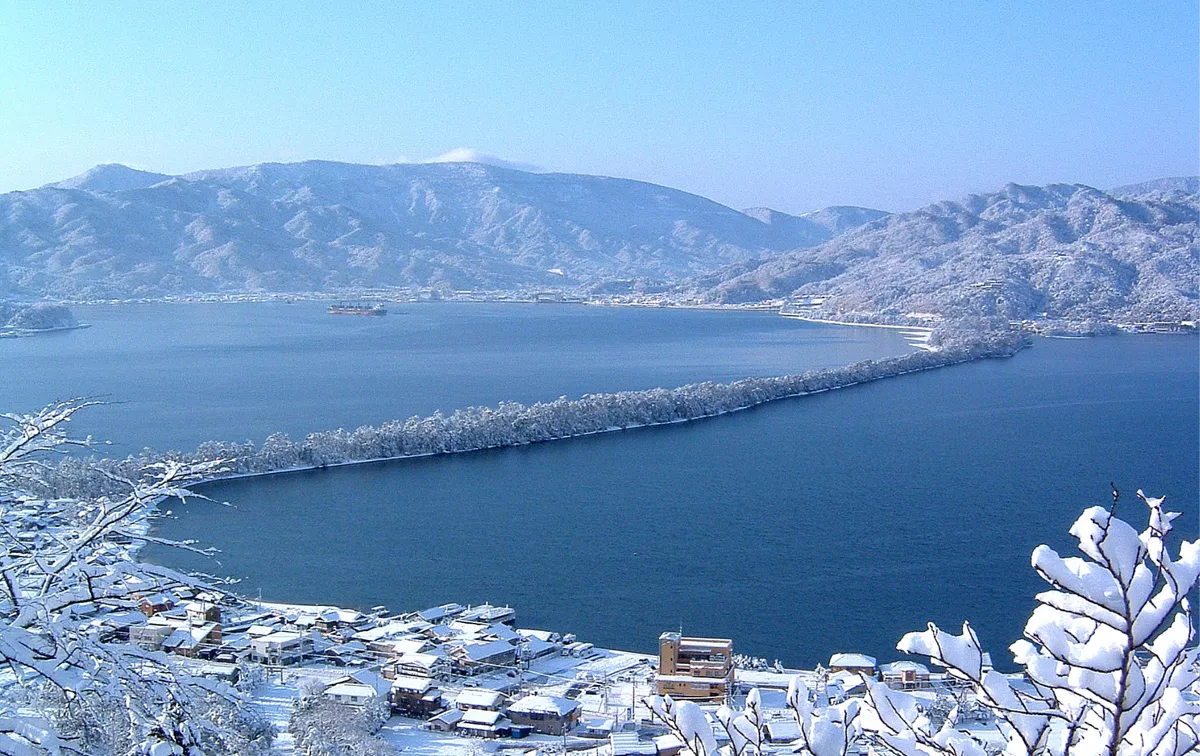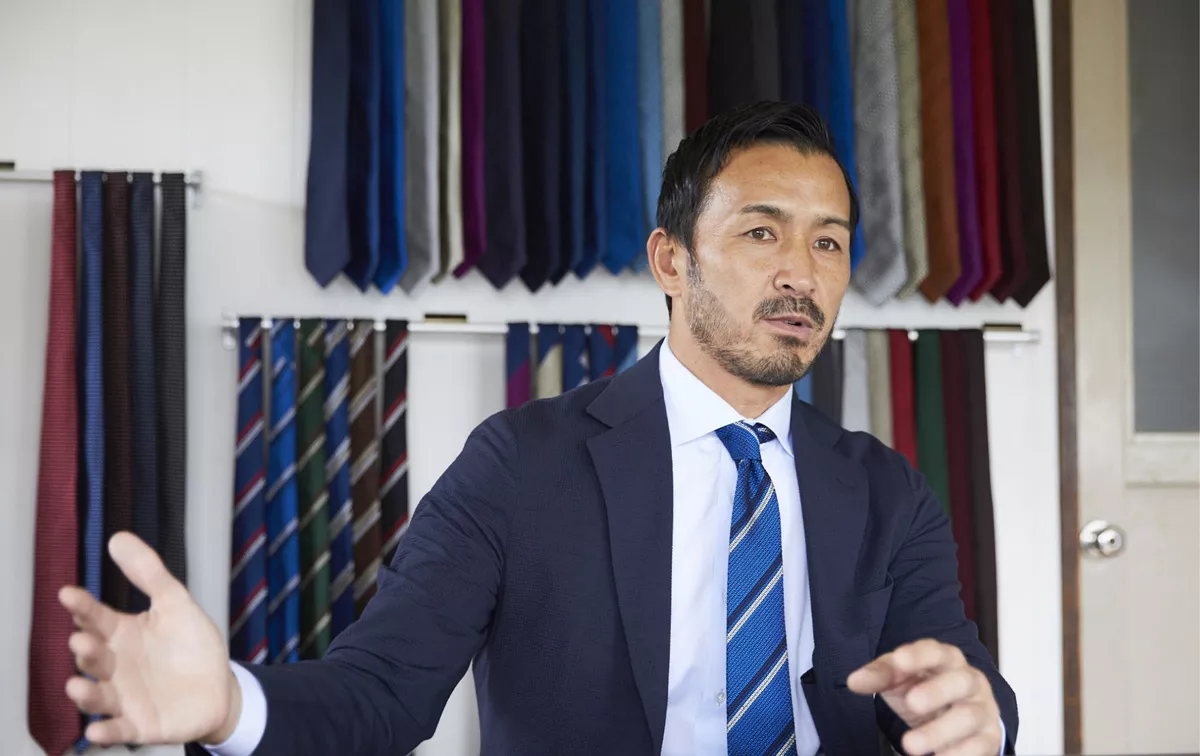about
kuska fabric
philosophy
In 2010, KUSKA launched its own brand that focuses on all handmade products, hoping to create products that express the texture of handweaving created by artisans globally, rather than the mass production and mass consumption of products that are mechanized (industrialized) and pursue only uniformity and productivity, seeing that the industrial revolution had its roots in handweaving (handicraft). For the past 10 years, KUSKA has focused on neckties, a symbol of men’s sense of beauty, as its main product.
We also want more people to touch and feel the rich appearance of handwoven fabrics produced by KUSKA. With this in mind, the necktie brand “KUSKA” was rebranded as “kuska fabric.”
kuska fabric interacts with each material, and takes the fluffiness, shade, and gentle texture created by the handiwork of artisans, alternating one right twist and one left twist of the weft yarn at a time, to the future.
kuska fabric aims to be the one and only global brand “with the pride of 300 years of beautiful manufacturing of Tango textiles.”
fabrics
The handweaving of kuska fabric creates a three-dimensional textile that is loosely woven while allowing air to enter the material. The yarn, twisted yarn, refining, non-fill processing, dyeing, handweaving, steaming and ironing, sewing, and all the techniques of Tango crepe that make the best Japanese kimono are used to plan and design materials in detail, and then weaving is finished using the hands, feet, and body of the artisan. The “haphazardness created by human sensibility and handiwork” translates into the rich “fluffiness,” “texture,” and “shades of light” of the fabric, and that is what puts kuska fabric in a class of its own.
 01
The relationship between
01
The relationship between
silk fibers and handweaving
By weaving silk fibers by hand in a three-dimensional manner and slowly letting air in, the silk is made to diffusely reflect light, which makes the most of the prismatic effect and creates a unique luster.
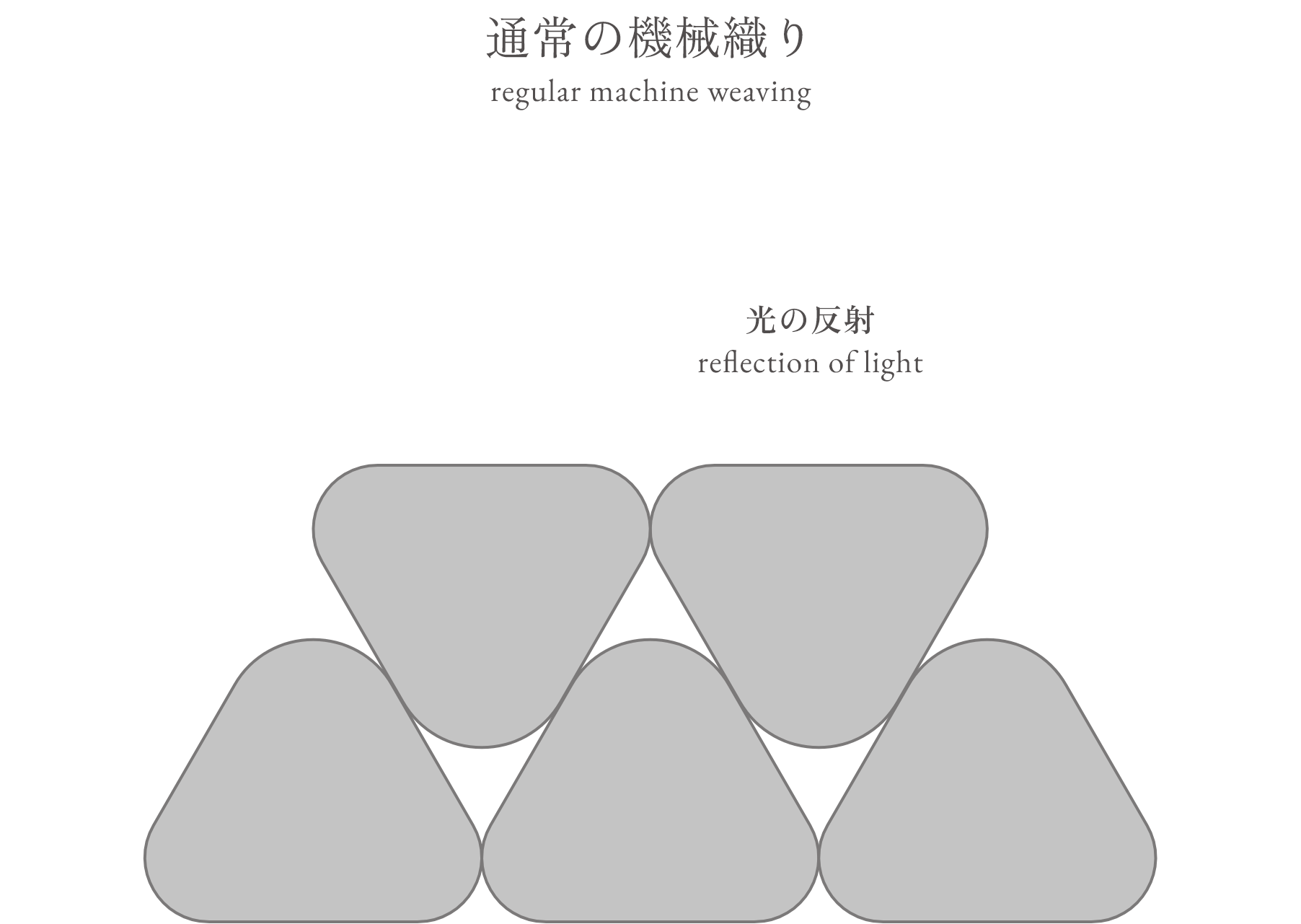
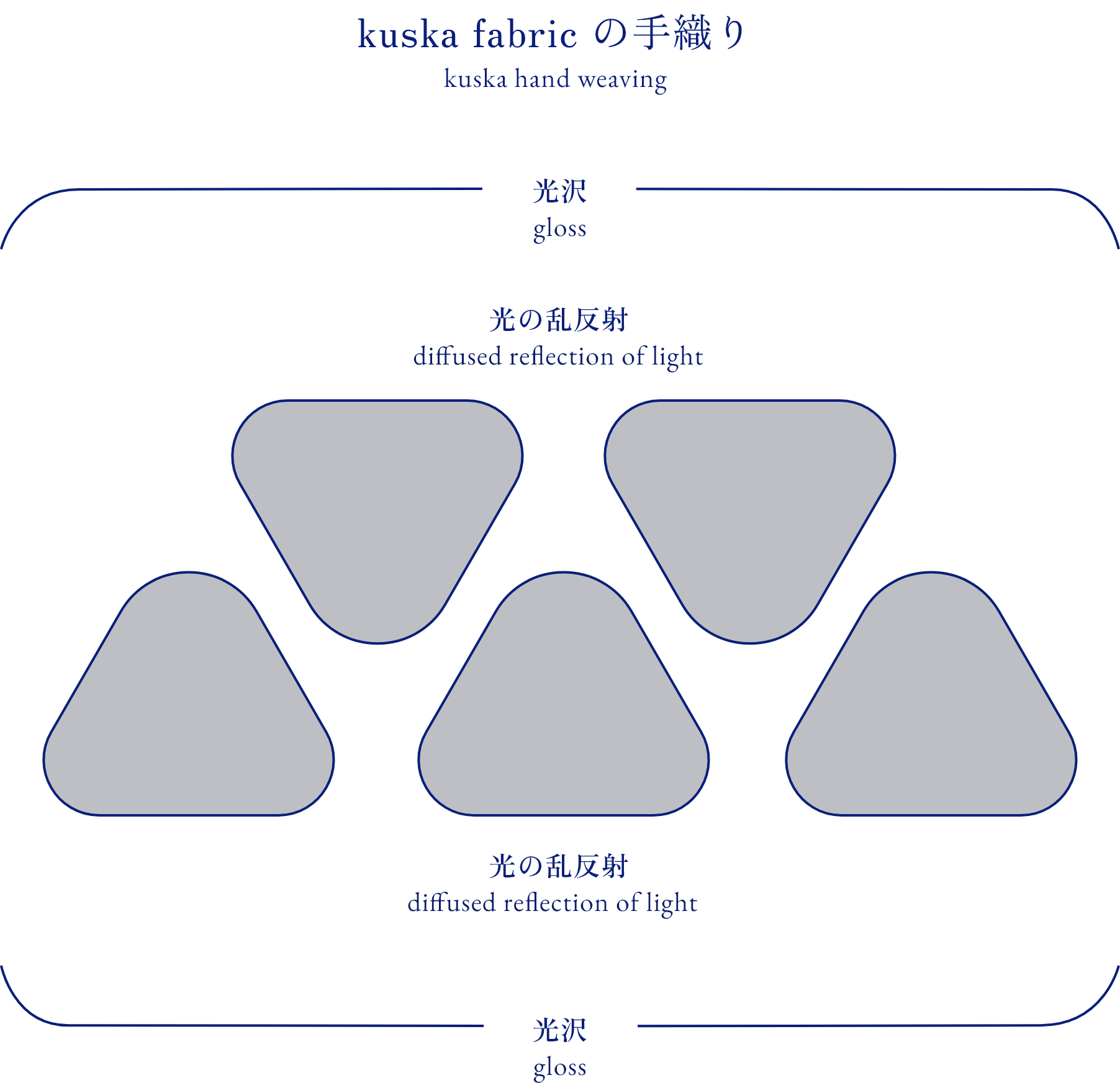
 02
Karamiori entangled weave (Jacquard)
02
Karamiori entangled weave (Jacquard)
and texture
Karamiori entangled weave (Jacquard) and texture
Entangled weave is used in the best textiles such as *ro, †sha, and ‡ra that are used for making kimonos.
*a plain- or twill-weave fabric with interspersed horizontal leno-weave stripes †an entirely leno-weave fabric ‡this combines the concept of twisted warp threads with a far more open weaving structure, creating patterns in the warp that appear similar to those seen in crochet and lace.
Machine weaving is done with the same rhythm, but handweaving is done with the rhythm of the artisan, and the appearance of the fabric can be created in units of several microns.
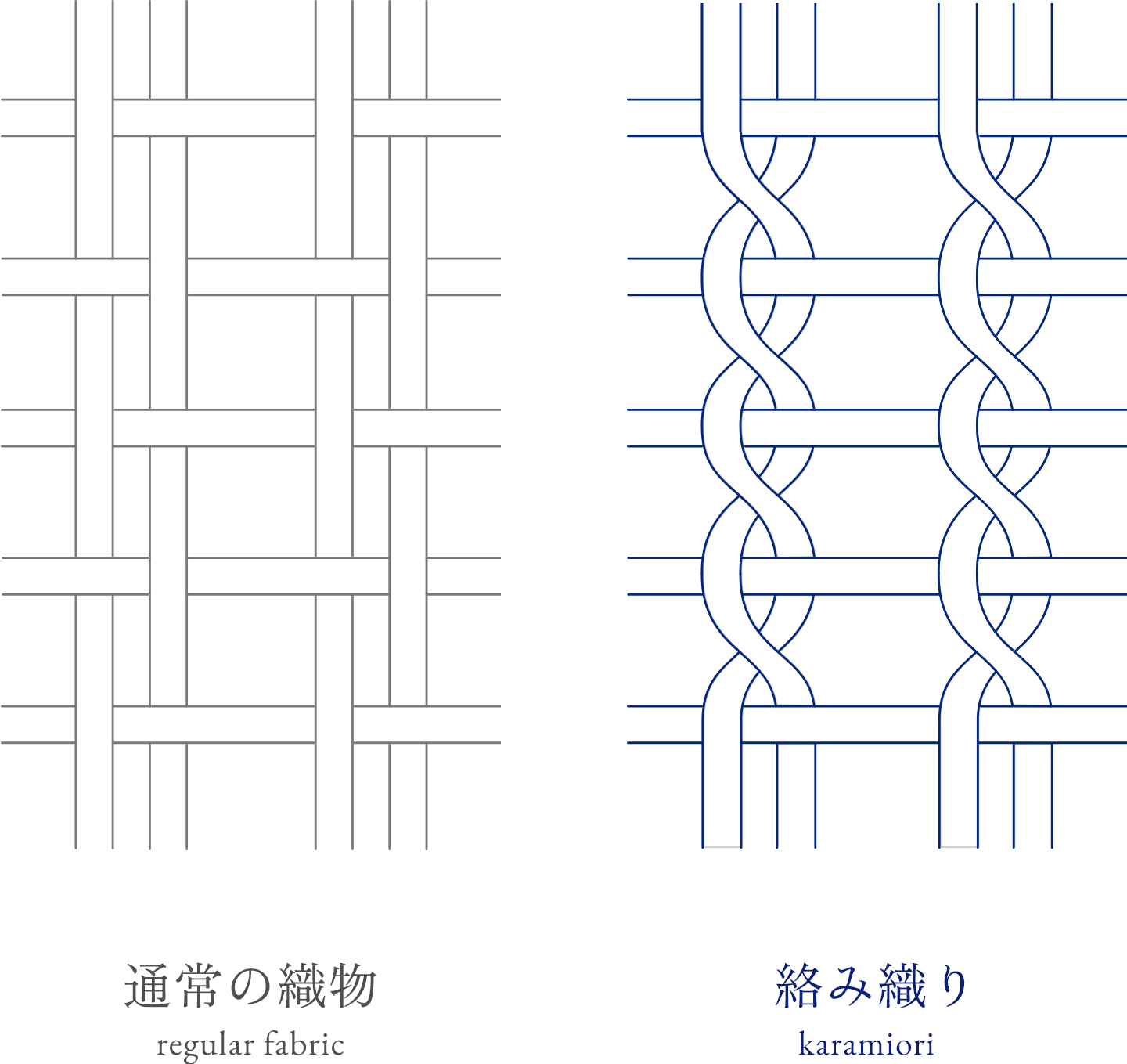
 03
Reflections on handiwork
03
Reflections on handiwork
for the future
In 2008, we disposed of all the mechanical looms that we had used as scrap iron, and obtained handlooms that had been out of business for about 40 years. While reusing the framework and other parts that could be used, we remade the width, length, and height of the looms to our original specifications, and installed Direct Jacquard units for machines to create our own handlooms.
kuska fabric does not mean a return to the old handloom, but a new handloom that is now mechanized and hybridizes the best parts of handloom and machine.
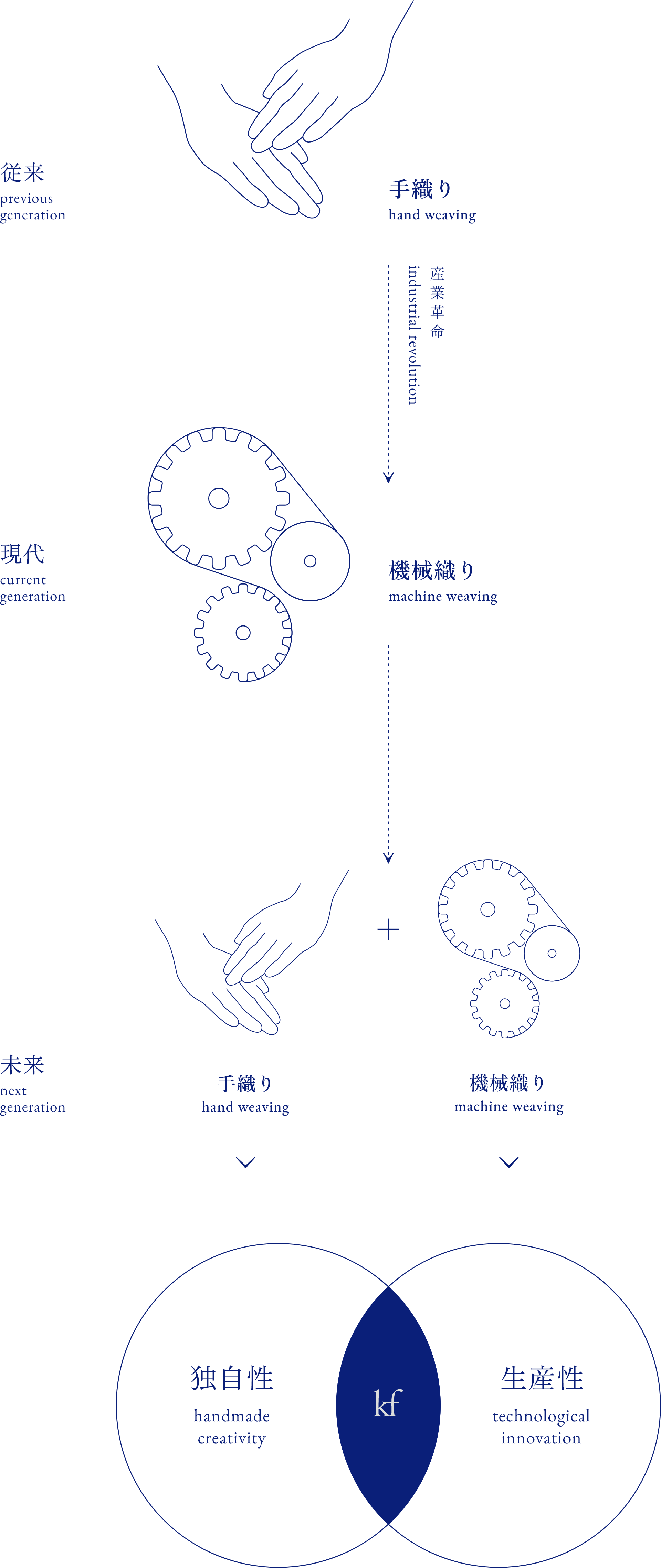
tango to the world
Since 2017, we have exhibited six times at the world’s largest men’s clothing trade show, Pitti Immagine Uomo, held in Florence, Italy, and are currently expanding into five countries, as well as Huntsman of Savile Row, London, a holder of the Royal Warrant, the world’s most prestigious fashion house and tailor. We are taking a step into the world, using traditional Japanese technology as a weapon.
